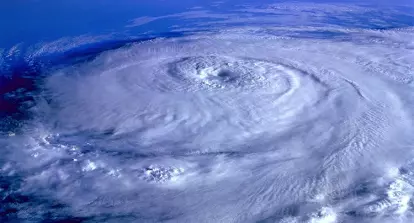“Student, this is an EMERGENCY. There was a potential breach in our server system. Do not click on any link sent by any university authority without verifying it. Call or text the cyber security team at XXX XXX XXXX if you have received any suspicious email.”
This is an example of using an emergency notification system during a crisis moment. As soon as the university authority detected a potential security breach that might harm students’ privacy, they activated the system and every single student received a notification.
An emergency notification system is an automated way of communicating to a group of people who are part of a business (customers/stakeholders/employees) and disseminating essential information during any moment of crisis.
Typically, an emergency notification system will contain a database of the people who need to be contacted during any crisis including vital information such as email, phone number, home addresses, and alternative contact people. However, a smart emergency notification system will have everything ready so when something goes wrong, a company should not waste time in designing the notification. Instead, a smart notification system relieves the emergency handler from the repetitive tasks so they can gather information, analyze the situation based on that information more efficiently. Once it is done, the only thing they need to do is to send the emergency notification to the appropriate people.
Who Should Have Emergency Notification System?
In one word: Everyone!
No business is immune to unexpected situations, even if they deploy the state-of-the-art security system and maintain protocols. Emergencies are unbiased and can occur to any business. From a potential window breaking to an irreversible fire hazard, tons of situations can happen within a moment. Although emergencies do only happen every now and then, you need to be prepared.
Big organizations should focus more on emergency management because the bigger the businesses are, the higher the potential damage is. That does not mean that small businesses shouldn’t invest in emergency notifications! While big companies will take a big blow, any mild situation can abolish a small organization.
In summary, no matter what size your business is, it is always better to get an emergency notification system because even if you are not using it right now for emergency purposes, you can always use the system for other business communication purposes.
Reasons to Use an Emergency Notification System
Information dissemination during any emergency is a vital aspect of emergency management. Therefore, to optimize the efficiency of an emergency management system, it should have an integrated smart communication platform.
With the help of a modern emergency notification system, businesses can lay out any emergency scenario with a set of interconnected tools that provide them with full coordination and timeliness in making decisions.
Here, I have broken down top 5 reasons for using an emergency notification system:
Reason #1 Have Pre-set Plans Ready
It will be a pleasant experience for you to type an alert message while a thick cloud of toxic chemicals is slowly moving out of the laboratory! Call the lab tech? Security to close doors? Alert all the employees? Grab my lunch bag and run?
Anyone will be overwhelmed if they must perform so many tasks during a crisis. This the perfect opportunity for you to make mistakes, which might worsen the situation.
But what if you have predicted the potential emergency situations that might happen to your business? Wouldn’t you be able to have a plan to deal with the issue as soon as it is detected? This is exactly what an emergency notification system gets you. In a smart emergency notification system, you can create pre-set scenarios and plan every detail meticulously, leaving no gaps in preparation.
Fire? Check! Shooter in the building? Check! Coyote roaming in the parking lot. Check!
When you have all these plans ready and you know who to contact, what to send, and what level of emergency to declare, you can simply click on the activate button as soon as any emergency is spotted.
Shouldn’t take more than a few seconds to respond!
Reason #2 Leverage Multiple Channels
Imagine, you are in the washroom for a while and when you came out, you find the entire office building empty! You rush to your computer and find an email with an all caps subject line that basically states you to get out of the building because the central heating system might burst soon! You take your belongings and run for your life while praying for a few extra minutes!
I don’t know about others, but I certainly don’t want to be in this situation!
Now, why did this happen? Because the emergency notification was sent via only one channel: the company email. Unfortunately, there are so many people who might be away from their system due to so many reasons. Therefore, it is better to deploy an emergency notification system because it works with multiple channels.
You can send the same message via email so those who are working can learn about the situation. You can send the message via SMS for those who are away from the desk. Voicemail should be another option. When selected, an emergency notification system will start broadcasting via all these channels, leaving little chance for anyone to miss out.
Reason #3 Track Recipients
I remember playing a video games where a mission is only successful if all the team members are alive in the end. Absence of even one member will be considered a failure, even though the objectives are achieved.
A similar thing happens to any emergency management system. If ONLY ONE individual is left behind or harmed by any incident, that system needs to be improved. You can send 10 messages via multiple channels during a chemical hazardous situation, and when you are out there, you find one colleague is missing. In your defense, you can certainly tell that you did what you were supposed to do: sending alerts. But deep inside, you will know that if you had a system to check if anybody missed any alert, you could have taken more steps. This is what leaders do: they leave no stones unturned.
Emergency management is something where we want 100% accuracy. And one way to receive 100% accuracy is to check if anybody is missing out.
Any modern emergency notification system comes with the feature to track the recipients. This means you can keep track of employees who opened your SMS, voicemail, or email. If you can see that anyone did not open the message even after receiving it, you can take the necessary steps.
Reason #4 Real-time Update
Another important aspect of having an emergency notification system is the opportunity to update everyone in real-time. Use of a real-time update feature is twofold:
First, it is essential to gather as much as information as possible to make a decision regarding any incident. If there is a shooter inside a company office, the security personnel should call 911 and provide them with every detail about the shooter, the latest location, and what weapon they are carrying. Employees can feed the information into the system by simply sending a text message. Security personnel can check that information in the common operating picture and guide the response team as necessary.
Secondly, those who are affected by any incident should receive constant updates regarding what steps are being taken and what stage the situation is currently at.
Reason #5 Prompt Guidelines
Remember the example of a toxic chemical gas scenario and the security personnel is overwhelmed with so many tasks and who to call for what? That scenario can be easily dealt with if the emergency notification system had a feature to send prompt guidelines to the appropriate person.
During any emergency, one common notification should be sent to all the stakeholders. On top of that, a set of different messages should be prepared to send to different personnel with guidelines for each of them. For instance, in the abovementioned scenario, the security personnel would receive specific instructions to close all the doors after driving everyone out. Lab techs would be told to investigate the leak and close it. The medical team would be presented with equipment so if anyone gets exposed in the toxic gas, they can treat them.
A set of prompt guidelines is another layer of security on top of all the training. As mentioned, it is natural to miss out a tiny task that was verbally delegated. Prompt guidelines will work both as a reminder and a checklist for any staff to perform the tasks more accurately.
Thinking of Getting an Emergency Notification System?
By now, I am pretty sure you are seriously considering having an emergency notification system that will not only serve as emergency measures but also will help you with other communication tasks. If that’s the case, try SimplyCast’s emergency suite of tools, state-of-the-art technology aimed at improving communication during crises.
SimplyCast is a proven, trusted emergency management system that was used in real emergency scenarios. With SimplyCast, you have all the benefits an emergency notification system should have: the opportunity to create potential scenarios, using multiple communication channels, tracking recipients, obtaining and disseminating updates, and sending out customized messages intended for particular groups of people. On top of that, using SimplyCast for your emergency notification system allows you to explore all other features of SimplyCast for your business.
SimplyCast lets you save time, start quickly, respond to emergencies, and direct operations from one platform while maintaining your data integrity to the highest level.
Click the button below to explore SimplyCast and claim your free trial.




